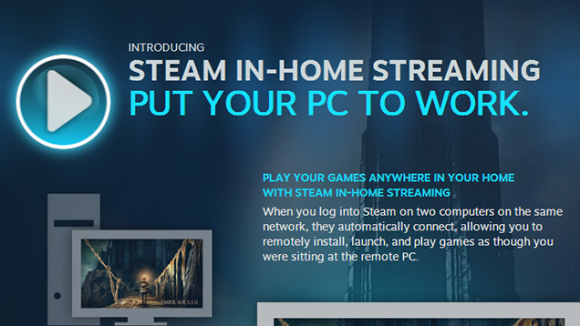For a while, the realms of the PC and the console stood far apart with clear differences. These days, however, those differences are becoming increasingly blurry as consoles become more and more versatile, with the ability to connect to the internet, download add-on content and stream movies through third party services such as Netflix. Leading the charge for the PC, on the other hand, is Half Life creator Valve, who recently added In-Home Streaming for Steam.
What is In-Home Streaming, exactly? Let’s say you have a powerful Windows-based gaming desktop at home in your bedroom and you have another computer in the home, say an Apple notebook with inferior hardware that you like to use in the comfort of your living room. In-Home Streaming essentially allows you to play games off your powerful gaming rig on your laptop, or any other computer you might have, by streaming video and audio from the host computer.
Both computers would have to be on the same network, and your internet connection would need to be fairly strong in order to minimize latency. The streaming isn’t restricted to just gaming, however; you can also perform outside tasks such as web browsing on your remote computer.
This would allow you to play your PC games on your massive home-theater PC which might not have the system requirements to play today’s hardware-demanding games.
If you had an old laptop that wasn’t getting much use and a big, fancy flatscreen TV, you could theoretically hook up that laptop to your TV and stream games from your gaming desktop onto the TV, while you use your old laptop to play.
Of course, this technology is at an early stage and its functionality is limited to computers that share the same network. However, as this article by Extremetech points out, it is perfectly possible for the the streaming service to evolve to allow streaming outside of one’s home over the internet.
Currently there is support for Windows, Mac OS X, Linux, and SteamOS, and you can only stream games from a Windows computer, but support for other operating systems and the ability to host from a non-Windows computer is on the way.
Play games, take surveys and take advantage of special offers to help support mxdwn.
Every dollar helps keep the content you love coming every single day.


